Your Fave?
Which of today’s six featured shorebird images is the strongest? All are invited to leave a comment and let us know why you made your choice.
What’s Up?
It was delightfully cool at Nickerson Beach early on the morning of Sunday 15 August 2021. And the photography was pretty good as well with the brisk north wind. I did lots of blurs when it was cloudy, and then went down to the surf for flight and skimmers skimming when the sun came out. Wherever you are, and whatever you are doing, I hope that you too have a great day.
Remember that you can find some great photo accessories (and necessities!) on Amazon by clicking on the Stuff tab on the orange/yellow menu bar above. On a related note, it would be extremely helpful if blog-folks like me, who spend too much money on Amazon, would get in the habit of clicking on the Amazon logo link on the right side of each blog post when they shop online. As you might expect, doing so will not cost you a single penny, but would be appreciated tremendously by yours truly. And doing so works seamlessly with your Amazon Prime account.
This blog post took more than an hour to prepare and makes 228 consecutive days with a new one. Please remember that if an item — a Delkin flash card, or a tripod head — for example, that is available from B&H and/or Bedfords, is also available in the BAA Online Store, it would be great, and greatly appreciated, if you would opt to purchase from us. We will match any price. Please remember also to use my B&H affiliate links or to save 3% at Bedfords by using the BIRDSASART discount code at checkout. Doing either often earns you free guides and/or discounts. And doing so always earns my great appreciation.
|
|
All from the East Pond at JBWR in August |
Jamaica Bay Wildlife Refuge/East Pond Shorebird In-the-Field Workshops
Saturday 21 August 2021. Morning session: 6:00 until 9:00am (Limit: 6/Openings: 3)
Sunday 22 August 2021. Morning session: 6:00 until 9:00am (Limit 6/Openings 4)
For many decades, the East Pond at JBWR was the premier spot in North America to photograph southbound migrant shorebirds: small sandpipers (known affectionately as “peeps”), plovers, godwits, dowitchers, yellowlegs, and lots more. The pond, the spot were I would like my ashes to be scattered (in about two decades), has not been good for many years because of gate valve malfunction and mismanagement of the resource. Combined, these resulted in water levels that were too high; the mudflats that normally would provide roosting and feeding locations for large flocks of shorebirds were covered.
The refuge staff finally seems to have things under control this year. Water levels at the south end are reported as the best in a decade. The young birds usually arrive around 15 AUG. They are much, much tamer than the skittish adults that begin arriving around 1 July each year. The tides are perfect for 21-22 AUG. That weekend will potentially offer the best juvenile shorebird photography in many, many years. Weather and migratory patterns permitting. You will need to get your butt muddy as you cannot do the shorebirds while standing.
Consider joining me to learn the history of the pond, to learn to identify and age a variety of shorebird species, to learn how to approach the birds, and to improve your photography. I am expecting to have some very good chances for creating images of single birds in flight.
In-the-Field morning session alone: $350/session. With brunch and image review: $425/per session.
An option would be to stay over, grab a motel room, and do both morning sessions. In addition, you might want to add in a 6pm till sunset session at Nickerson Beach for only $250.00. To learn more or too register, please shoot me an e-mail.
Update on Canon Stuff in Stock at Bedfords!
The personable, helpful, and always eager-to-please Steve Elkins let me know that Bedfords now has a very few R5-s left along with several R6 bodies. Those along with a very few RF 100-500 lenses and a good supply of the new Canon RF 100mm f/2.8 Macro lenses. He expects the R5-s and the RF 100-500mm lenses to be gone soon. Spend more than $7500.00 and use the BIRDS AS ART code at checkout to earn a free copy of the R5/R6 Camera User’s Guide. Spend less and shoot me an e-mail to learn of your discount. The R5 and R6 are Canon’s best-ever bodies for flight photography and makes a great all around lens for bird photography. And the 100mm focal lengths, long the favorite macro focal length of Denise Ippolito, is both hugely popular and effective for small subjects like flowers, insects, and more.
Please Remember
With income from IPTs now close to zero, please, if you enjoy and learn from the blog, remember to use one of my two affiliate programs when purchasing new gear. Doing so just might make it possible for me to avoid having to try to get a job as a Walmart greeter and will not cost you a single penny more. And if you use Bedfords and remember to enter the BIRDSASART code at checkout, you will save 3% on every order and enjoy free second-day air shipping. In these crazy times — I am out at least forty to sixty thousand dollars so far due to COVID 19 (with lots more to come) — remembering to use my B&H link or to shop at Bedfords will help me out a ton and be greatly appreciated. Overseas folks who cannot order from the US because of import fees, duties, and taxes, are invited to help out by clicking here to leave a blog thank you gift if they see fit.
New and Better Bedfords Discount Policy!
You can now save 3% on all of your Bedfords photo gear purchases by entering the BIRDSASART coupon code at checkout. Your discount will be applied to your pre-tax total. In addition, by using the code you will get 2nd day air shipping via Fed Ex.
Grab a Nikon AF-S Teleconverter TC-14E III and save $14.99. Purchase a Canon EOS R5 and your discount will be $116.97. Purchase a Sony FE 600mm f/4 GM OSS lens and save a remarkable $389.94! Your Bedford’s purchase no longer needs to be greater than $1,000.00 for you to receive a discount. The more you spend, the more you save.
Money Saving Reminder
Many have learned that if you need a hot photo item that is out of stock at B&H and would enjoy free second-day air shipping, your best bet is to click here, place an order with Bedfords, and enter the coupon code BIRDSASART at checkout. If an item is out of stock, contact Steve Elkins via e-mail or on his cell phone at (479) 381-2592 (Central time). Be sure to mention the BIRDSASART coupon code and use it for your online order to save 3% and enjoy free 2nd-day air shipping. Steve has been great at getting folks the hot items that are out of stock at B&H and everywhere else. The wait lists at the big stores can be a year or longer for the hard to get items. Steve will surely get you your gear long before that. For the past year, he has been helping BAA Blog folks get their hands on items like the SONY a9 ii, the SONY 200-600 G OSS lens, the Canon EOS R5, the Canon RF 100-500mm lens, and the Nikon 500mm PF. Steve is personable, helpful, and eager to please.


Gear Questions and Advice
Too many folks attending BAA IPTs (remember those?) and dozens of photographers whom I see in the field and on BPN, are–out of ignorance–using the wrong gear, especially when it comes to tripods and more especially, tripod heads… Please know that I am always glad to answer your gear questions via e-mail.
|
|
|
August 23, 2014 at the East Pond, JBWR, Queens, NY. Image #1: Least Sandpiper in fresh juvenal plumage |
JBWR August 2021 Goal: Better These Six Images
Least Sandpiper aka “least” or LESA
This coming weekend I am hoping to make lots of high quality images of the four species featured in today’s blog post. In addition, I will — weather permitting, be trying for some incoming flight shots. I’d love for you to join us on Saturday or Sunday for some potentially great photography and the chance to learn a ton about shorebirds from one of the men who “wrote the book.” In my case, Shorebirds: Beautiful Beachcombers.
The bird in Image#1 is a Least Sandpiper; note the yellow legs and the fine-tipped bill). It is in fresh juvenal plumage; note the overall warm tones, the neat, fringed feathers, the evenly patterned upperparts, and the buffy breast band.
|
|
|
August 20, 2010 at the East Pond, JBWR, Queens, NY. Image #2: Semipalmated Plover worn adult |
Semipalmated Plover aka “semi-plover” or SEPL
This bird is an adult. The upperparts are the color of wet mud. Note that the edges of the feathers of the bird’s upperparts show significant fraying and wear. This in contrast with the fresh, unworn feathers of the other birds, all juveniles, that are featured in this blog post. Plovers have larger eyes and shorter bills than most sandpipers to facilitate capturing prey on the surface of the mud or sand or grass. The longer bills of the sandpipers probe the substrate and find their prey by touch; the tips of their bills are flexible and sensitive.
|
|
|
August 28, 2012 at the East Pond, JBWR, Queens, NY. Image #3: Semipalmated Sandpiper in moderately fresh juvenal plumage |
Semipalmated Sandpiper aka “semi-sand” or SESA
This is by far the most common of the southbound migrant shorebirds; it would not be uncommon to see as many as 1000-1500 adults on the East Pond in mid-July. This bird exhibits a fairly warm, evenly patterned appearance with each feather edged in either buff or off-white. The feather edgings are showing a tiny bit of wear. The legs of this species are always dark — usually black or a very dark green on some young birds.
|
|
|
August 8, 2016 at the East Pond, JBWR, Queens, NY. Image #4: Semipalmated Sandpiper: this is a moderately fresh juvenile aggressively defending its feeding territory |
Threat Display Over Feeding Territory
This young semi-sand was threatening another bird of the same species that was encroaching on its feeding territory. Such encounters are fairly common. This juvenile is a bit grayer than average.
|
|
|
August 24, 2007 at the East Pond, JBWR, Queens, NY. Image #5: Semipalmated Sandpipers: juveniles in juxtaposition |
Creating Juxtapositions
Look for a bird that lines up pleasingly with another. Focus on the closest bird and then fire away. Work quickly as pleasing juxtapositions may last only a moment or two.
|
|
|
August 22, 2010 at the East Pond, JBWR, Queens, NY. Image #6: Short-billed Dowitcher in very fresh Juvenal plumage |
Short-billed Dowitcher aka “short-billed” or SBDO
Juveniles of this species are drop-dead gorgeous with rich, warm, orange tones predominating. Chances are excellent of getting some great stuff of birds of this species in killer fresh juvenal plumage … This image was made with fill flash on a very dull day. I have been thinking about getting a SONY or Good flash for my SONY system …
Typos
With all blog posts, feel free to e-mail or to leave a comment regarding any typos or errors.

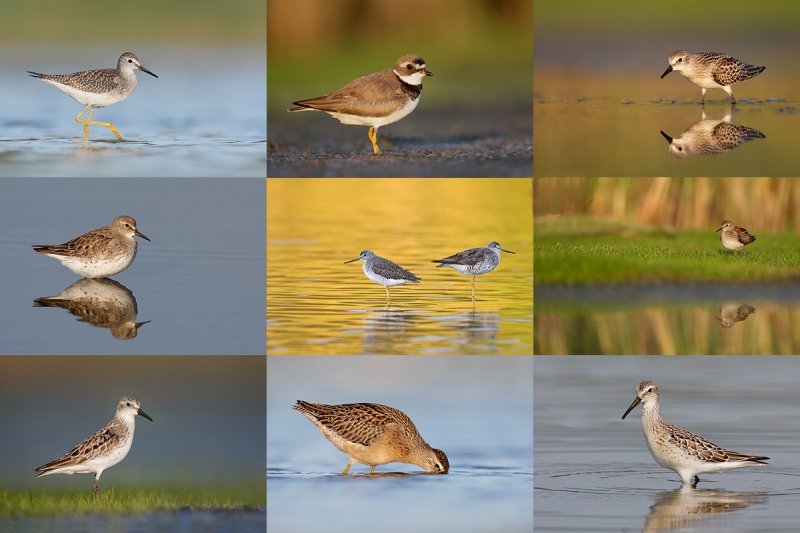

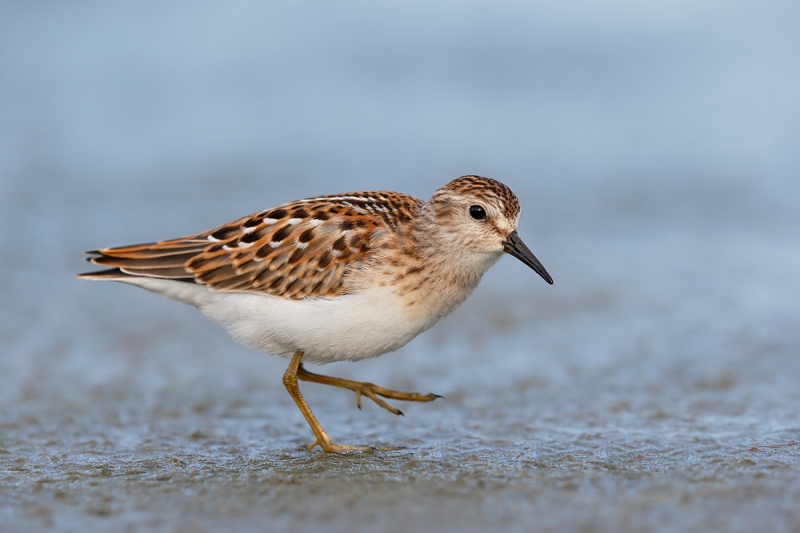
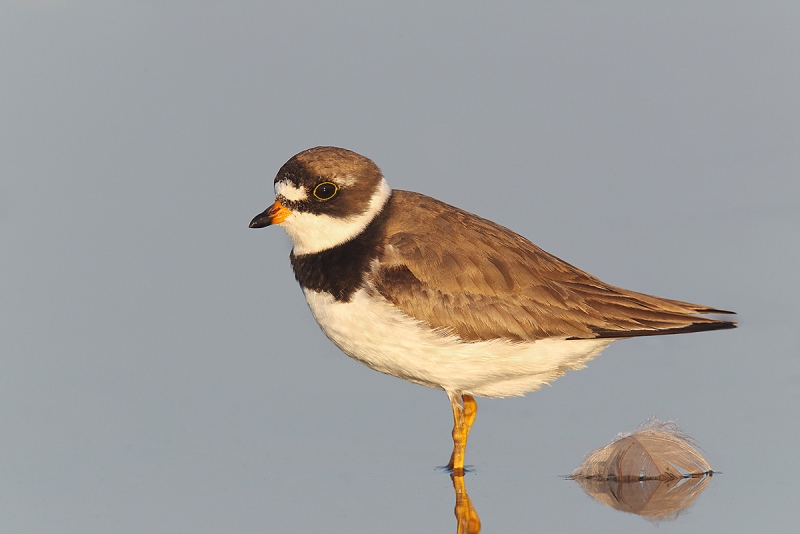
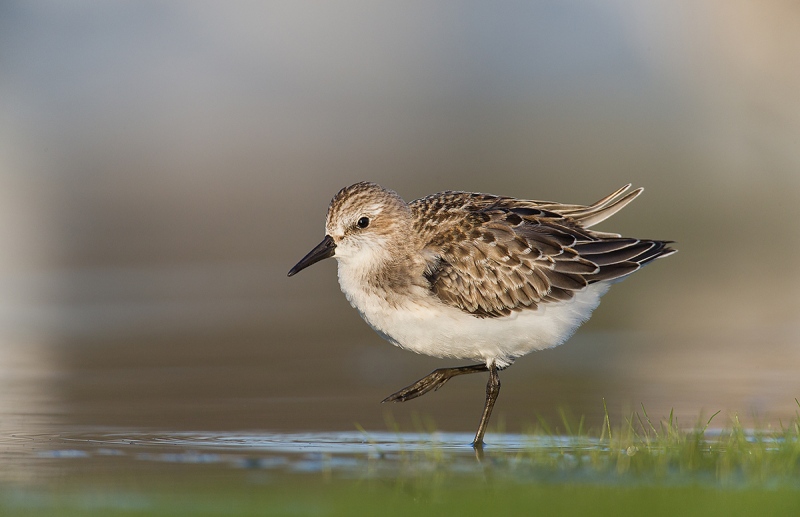
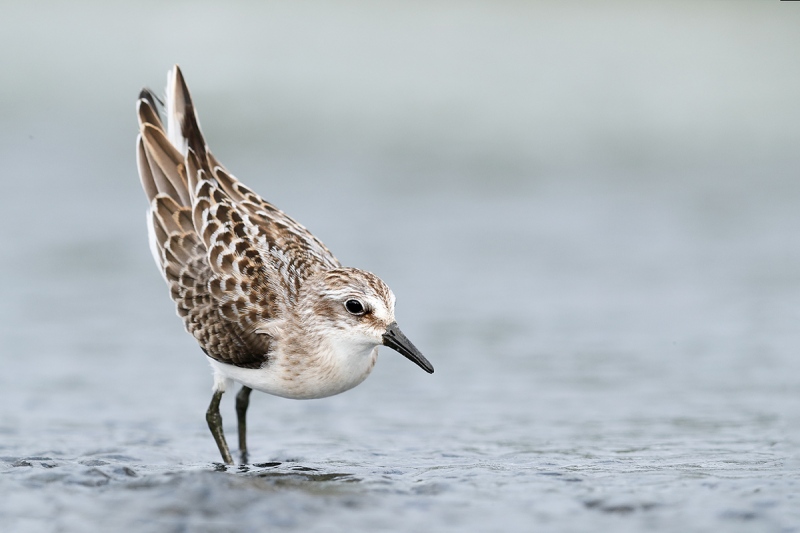
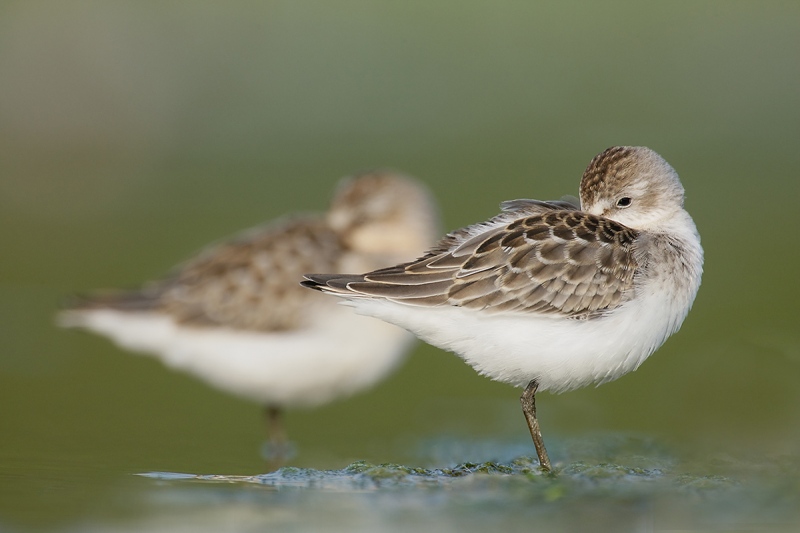
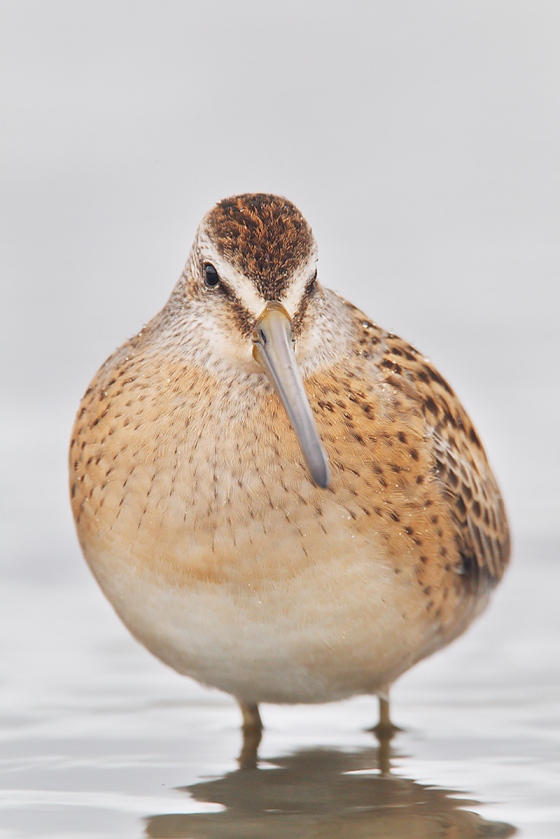













I love #3 Artie.
The background colour is just right for the bird. Love the pose and the raised foot.
David.
I like #3 best …. the grass on the lower edge and left offset by patches of blue above, the bird slightly off center in the frame, perfect HA and one foot raised and the feathers of the far wing pointing upward….excellent!
All are excellent! Image 2 is my favorite for simplicity and balance. I really like image 5 as well.
I like all the shorebird shots. You’ve certainly been blessed. Thanks.
Yes, I say that all the time.
with love, artie
Is “juvenal” a special spelling of “juvenile” used in relation to ornithology, or just a misspelling? My dictionary just says it is the name of a Roman satirist.
That’s what I was wondering!
Hi Bill,
Excellent question. I have been waiting for someone to ask it for years. Juvenile is good as either a noun or an adjective. Juvenal is fine only when used as an adjective describing the word plumage 🙂
with love, artie
Favorite is #6, the dowitcher. Different, warm colors, looks like a wood carving. Good DOF on the bill tip.
Re-processing on any of these (they look great)? Anytime I reach back to older images, I discard the sharpening in ACR, use DeNoise, and take advantage of ACR’s improved de-fringing of chromatic aberration.
These are all with the original optimization 🙂
thanks with love, artie
Of all these great images, #3 is my fav. The grass helps the setting and contrast.
I really like several of them, but I’m going to choose #3 because of : (1) the raised foot,
(2) the upturned wing and (3) the environment. But, if it were mine, I would crop off the light area on the left that pulls your eyes away from the bird. Try it, I bet you’ll like it!
1&4 are my favorites (on first impression). The colors, razor thin DOF, background, and poses are fabulous. The great pose in 1 is matched by the expertise in nailing the perspective in 4 to include the entire bill in the DOF.
I agree with Kevin, but I lke all of them veri much!
Wow Artie all great images ,Like the Dowitcher with the subtle head turn but maybe two large in the frame. and I lean that way. I guess I will go with the Semipalmated Sandpiper love the grass and the upturn of the primaries on the far side. Have a beautiful day summer is waning.